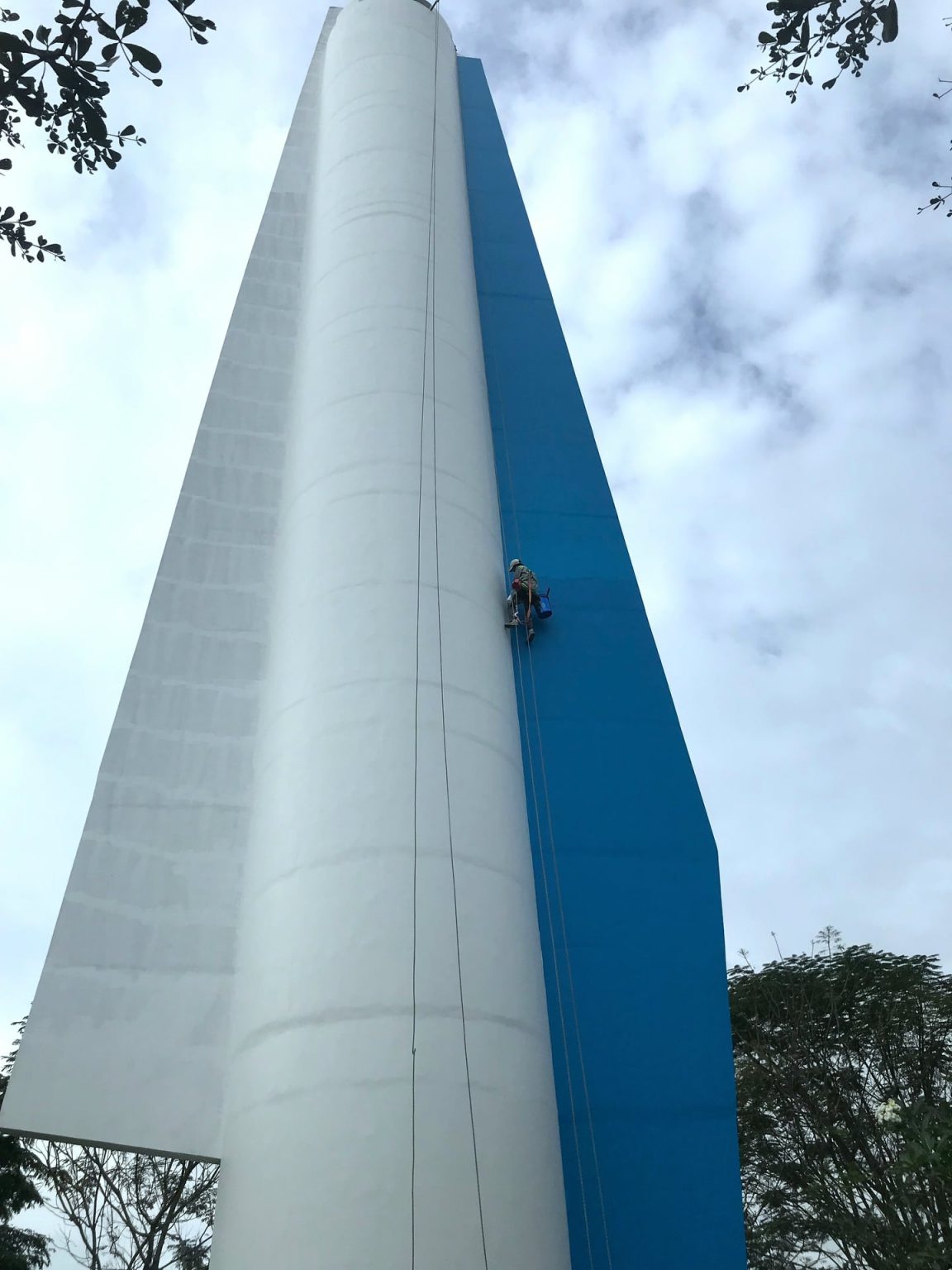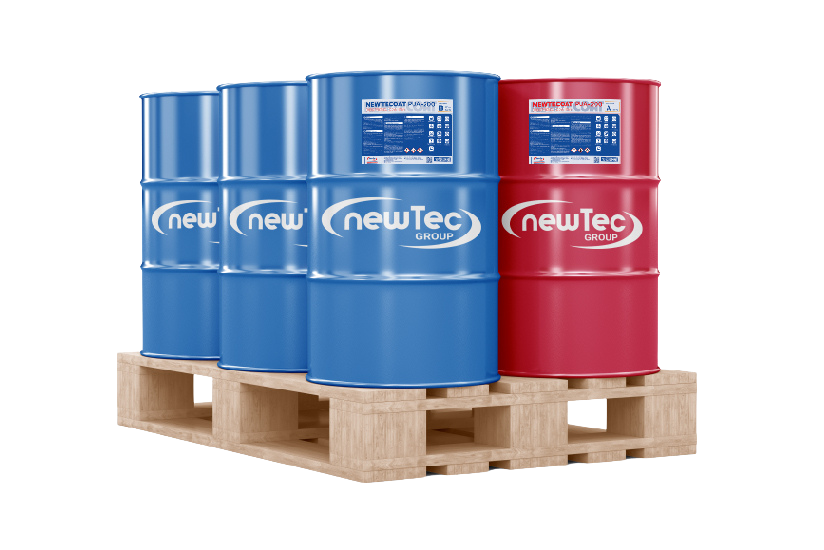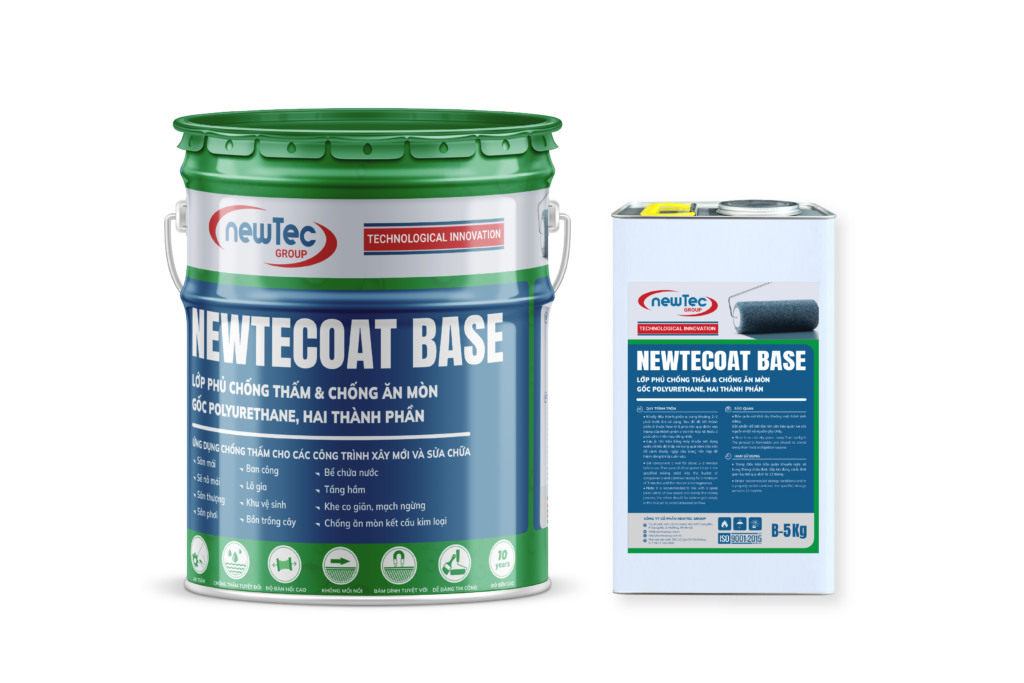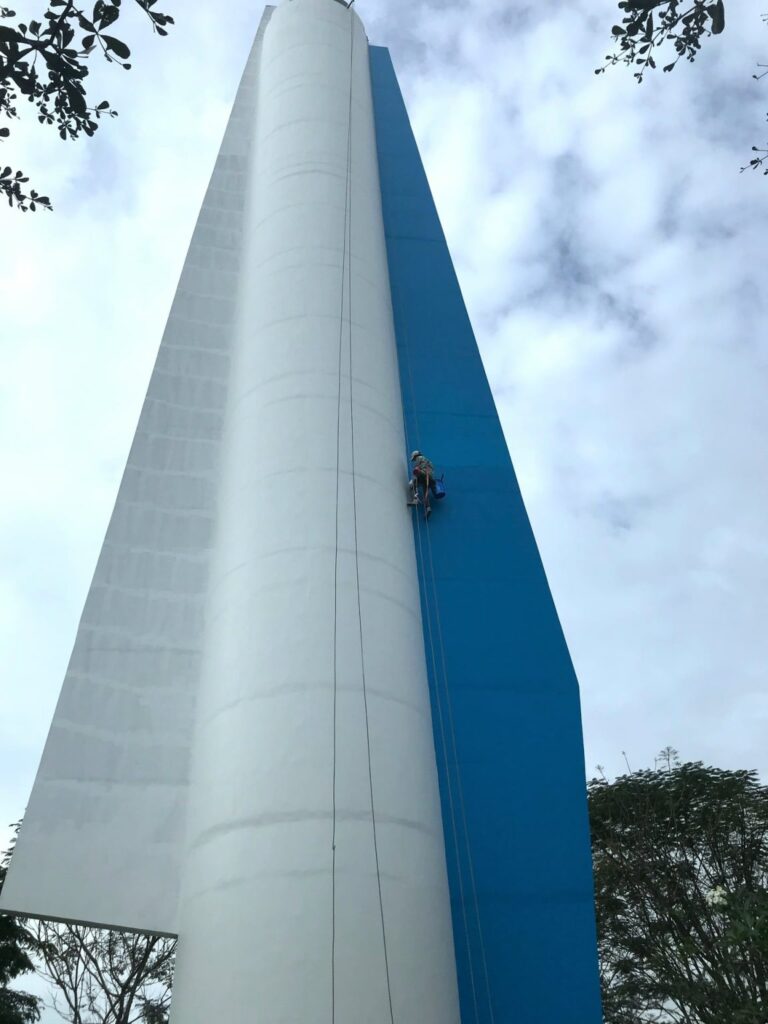For Saigon people over the past 50 years, everyone must be familiar with the image of a tall tower at the eastern gateway of the city of Saigon. If coming from Hang Xanh, the tower is on the right side of Phan Thanh Gian Street (formerly), now Dien Bien Phu Street, before entering the bridge. Although it is a familiar image, few people know what this tower is and its uses. This article will explain the formation process, uses and operating principles of the tower, as well as images of this tower from before 1975.

Repair and maintenance of 45m high, 1000m2 anti-collision tower
This familiar image is the pressure cutting tower built in 1966, at the same time as the inauguration of Thu Duc waterworks, and was the largest water plant in Southeast Asia at that time. To this day, this water plant is still the main water supplier for Saigon.
The tower on Phan Thanh Gian street is one of two pressure cutting towers of Thu Duc waterworks. The other tower is located near Thu Duc intersection, right at the water plant as shown below.
The use of this pressure cutting tower is to regulate and stabilize water pressure from Thu Duc waterworks. This pressure cutting tower is more than 30 m high and has a fairly simple operating principle. Along the tower body, there is a pipe connected to the large water supply pipe below. When water from the plant is pumped into the large pipe and runs to the tower, the water pressure will be regulated and reduced, before this water source mixes with the smaller pipe network.
For example, if water is pumped out from the factory with high pressure equivalent to a water column higher than 30m, then when it reaches this pressurization tower, the water will be pushed to the top of the tower. Accordingly, the water pressure is reduced.
Without this pressure cutting tower, the water from the large pipeline will have high pressure, and when it mixes with the smaller water supply pipeline network, it will cause leaks and broken pipes. Thu Duc waterworks was inaugurated on December 12, 1966, located in the current Linh Trung area, providing 90% of the domestic tap water needs of the capital Saigon. This was an important event, because from that point on, most Saigon people were able to use tap water, and no longer got tap water.
Actually, tap water in Saigon has been available for a long time, but only in Central area, facade. It was only when the Thu Duc waterworks was born that tap water was “popularized” to 90% of people in the capital. Also from that time, the pressurization tower of Phan Thanh Gian Street, now Dien Bien Phu, became a familiar image to Saigon people.





You may also be interested in
Do You Have to Sand Between Coats of Polyurethane for a Flawless Finish?
When finishing wood, achieving that perfect shine can feel like a daunting task. One question
Apr
Is Polyurethane Foam Waterproof? Understanding Its Water Resistance Properties
When it comes to the question, “Is polyurethane foam waterproof?” the answer isn’t as straightforward
Apr
What is Polyurethane Paint Used For? Exploring Its Versatile Applications
Polyurethane paint is a versatile coating that has found its way into many industries and
Apr
Is Polyurethane Safe? Understanding the Risks and Benefits of This Versatile Material
Polyurethane is a popular material found in many everyday products, from furniture to insulation. But
Mar
What Does Polyurethane Do? Understanding Its Benefits and Applications in Woodworking
Polyurethane is a popular finish in woodworking, and for good reason. It offers a tough
Mar
Understanding What is Polyurethane Made Of: A Comprehensive Guide
Polyurethane is a material that shows up in a lot of everyday items, from furniture
Mar
What is Polyurethane Coating and Why You Should Consider It for Your Next Project
If you’re looking for a reliable way to protect surfaces, you might want to consider
Mar
Understanding What Is Polyurethane Foam Made Of: A Deep Dive into Its Composition and Production
Polyurethane foam is everywhere, from the cushions on your couch to the insulation on your
Mar